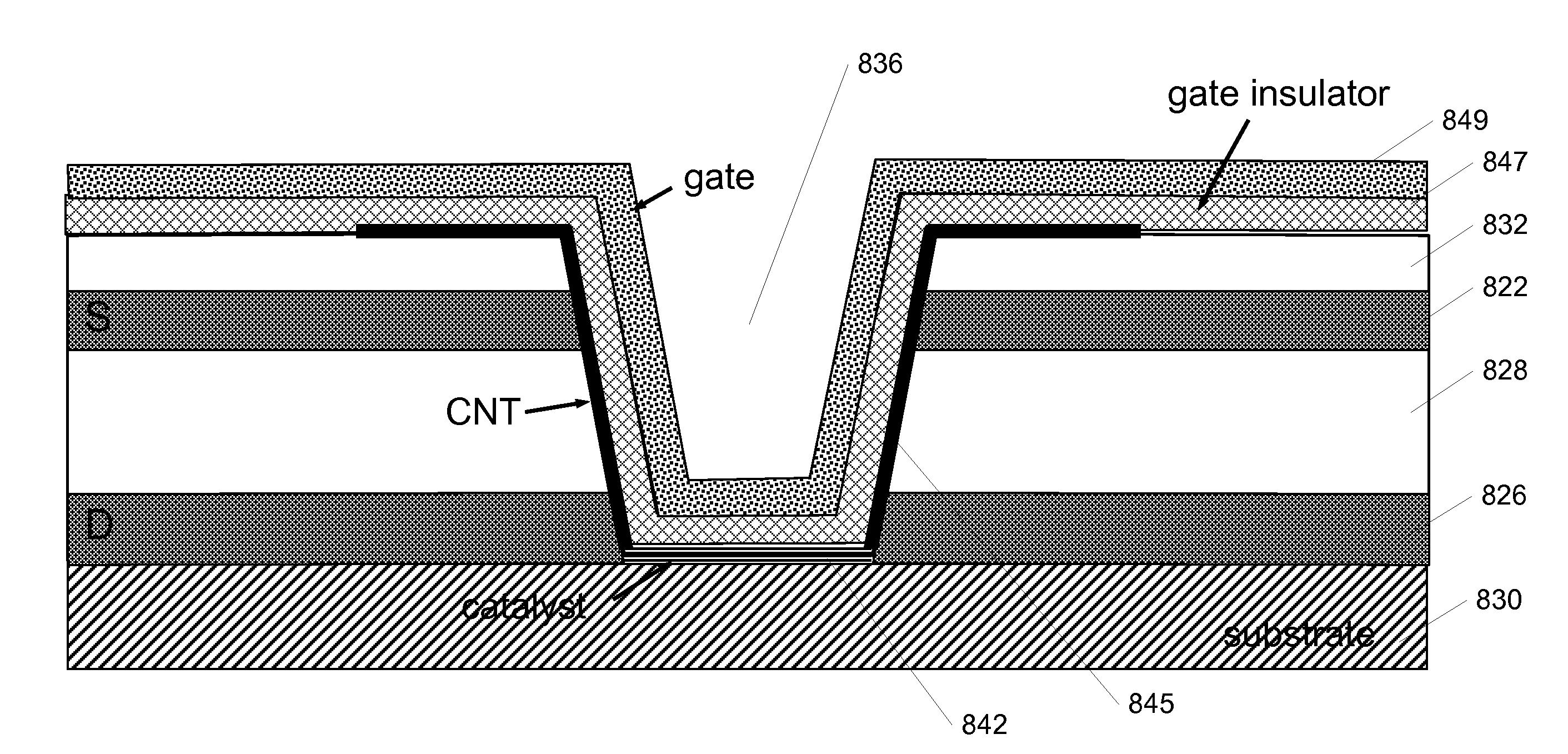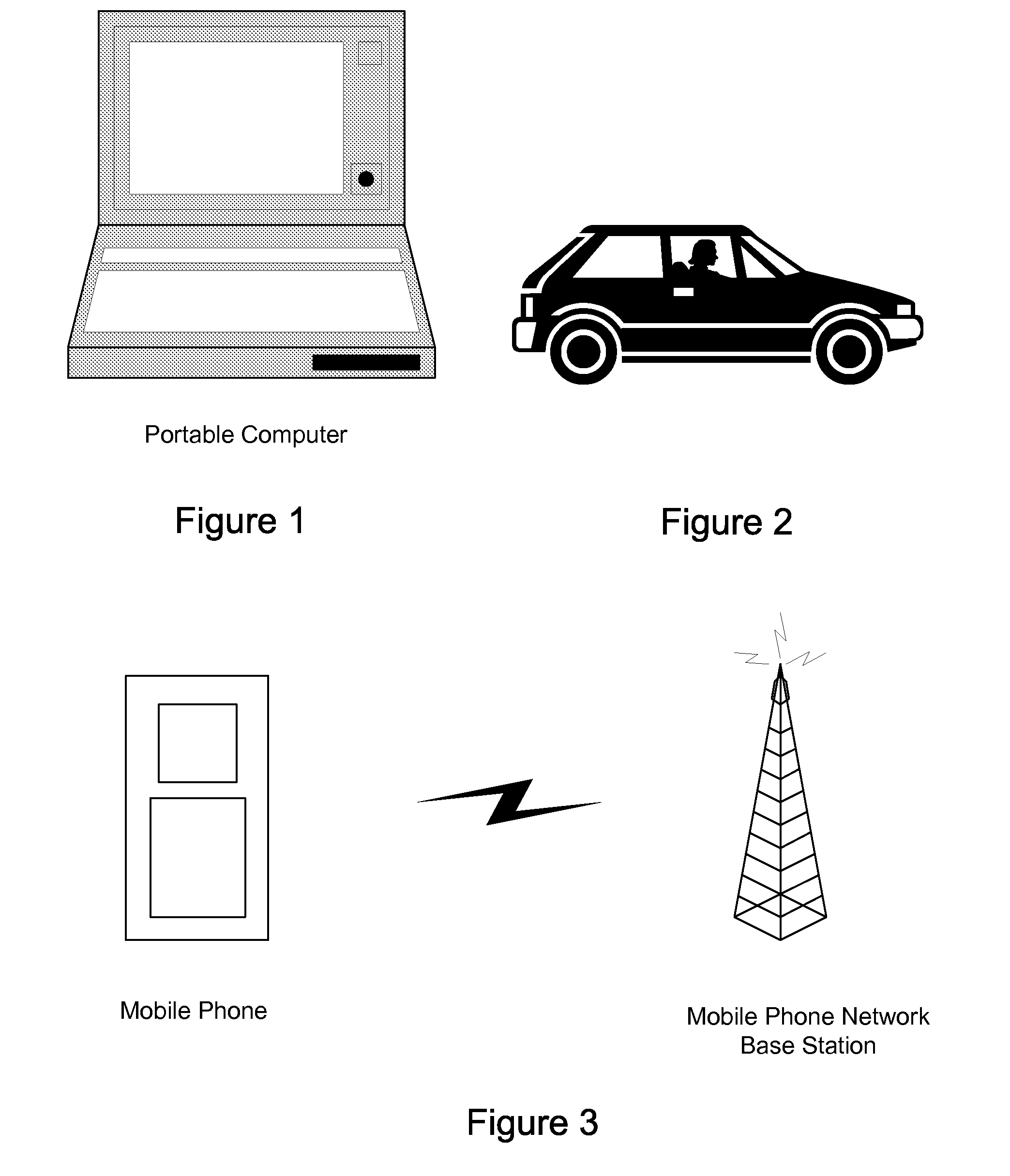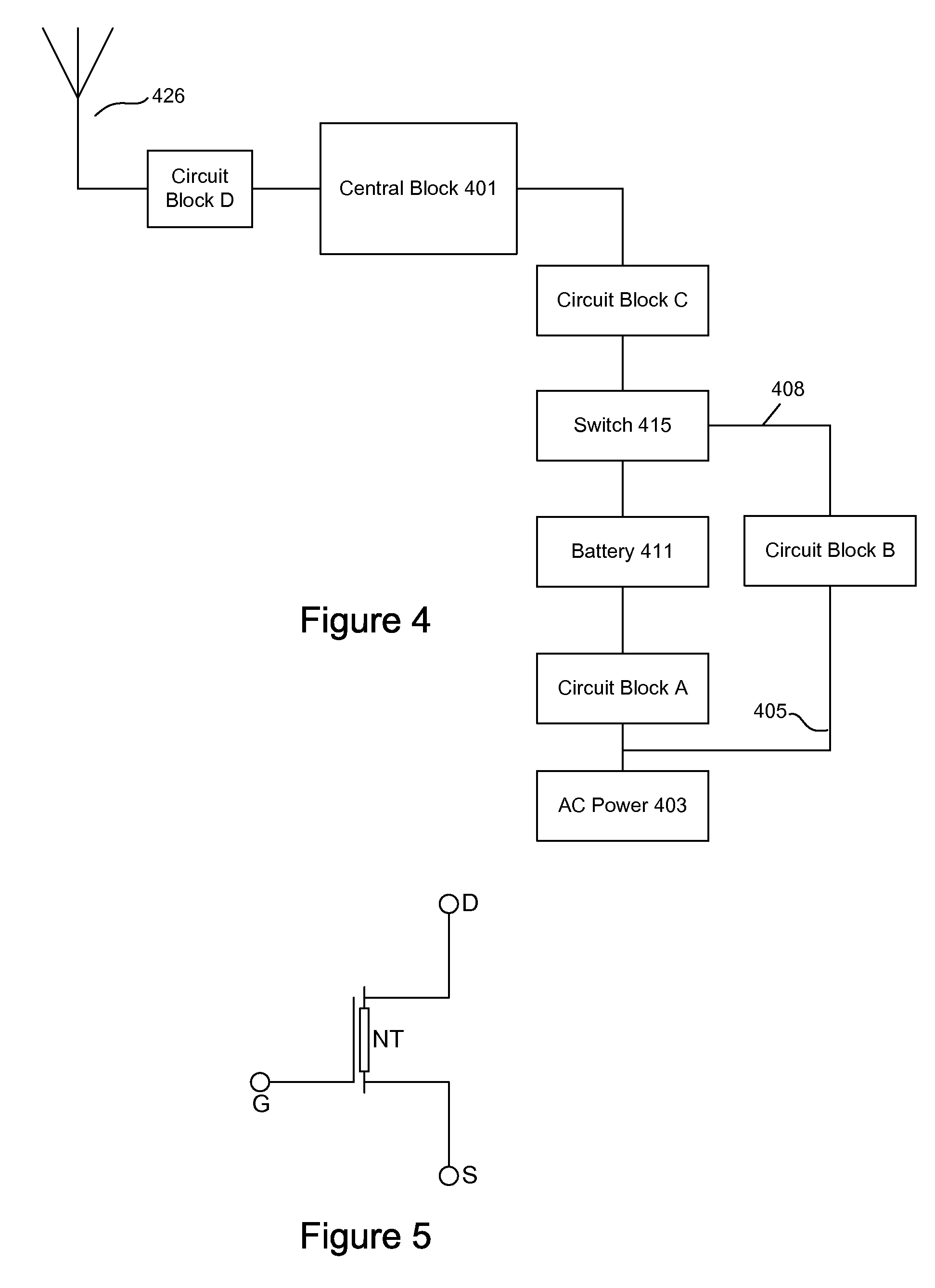Edge-Contacted Vertical Carbon Nanotube Transistor
a carbon nanotube and transistor technology, applied in the field of silicon material semiconductor devices and their manufacture, can solve the problems of pushing the boundaries of silicon material performance requirements, and achieve the effect of maximizing power density
- Summary
- Abstract
- Description
- Claims
- Application Information
AI Technical Summary
Benefits of technology
Problems solved by technology
Method used
Image
Examples
Embodiment Construction
[0046]The invention provides a carbon nanotube device and techniques for manufacturing such a device, especially a transistor device. In a specific embodiment, the carbon nanotube device is a single-walled carbon nanotube (SWNT) transistor, where the single-walled carbon nanotube is an element of the transistor. A specific application of a single-wall carbon nanotube device of the invention is as a power transistor, a type of transistor capable of passing relatively high currents compared to standard transistors. Carbon nanotube transistors of the invention may be fabricated independently or in combination with devices and with devices of different technologies.
[0047]FIG. 1 shows an example of an electronic system incorporating one or more carbon nanotube transistors or rectifying devices of the invention, or combinations of these. Electronic systems come in many different configurations and sizes. Some electronic systems are portable or handheld. Such portable systems typically may...
PUM
| Property | Measurement | Unit |
|---|---|---|
| width | aaaaa | aaaaa |
| depth | aaaaa | aaaaa |
| output voltage | aaaaa | aaaaa |
Abstract
Description
Claims
Application Information
 Login to View More
Login to View More - R&D
- Intellectual Property
- Life Sciences
- Materials
- Tech Scout
- Unparalleled Data Quality
- Higher Quality Content
- 60% Fewer Hallucinations
Browse by: Latest US Patents, China's latest patents, Technical Efficacy Thesaurus, Application Domain, Technology Topic, Popular Technical Reports.
© 2025 PatSnap. All rights reserved.Legal|Privacy policy|Modern Slavery Act Transparency Statement|Sitemap|About US| Contact US: help@patsnap.com



